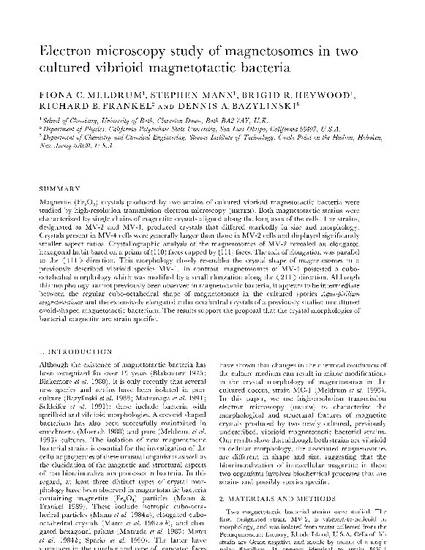
Magnetite (Fe304) crystals produced by two strains of cultured vibrioid magnetotactic bacteria were studied by high-resolution transmission electron microscopy (HRTEM). Both magnetotactic strains were characterized by single chains of magnetite crystals aligned along the long axes of the cells. The strains, designated as MV-2 and MV-4, produced crystals that differed markedly in size and morphology. Crystals present in MV-4 cells were generally larger than those in MV-2 cells and displayed significantly smaller aspect ratios. Crystallographic analysis of the magnetosomes of MV-2 revealed an elongated hexagonal habit based on a prism of {110} faces capped by {111} faces. The axis of elongation was parallel to the direction. This morphology closely resembles the crystal shape of magnetosomes in a previously described vibrioid species MV-I. In contrast, magnetosomes of MV-4 possessed a cubooctahedral morphology which was modified by a small elongation along the direction. Although this morphology has not previously been observed in magnetotactic bacteria, it appears to be intermediate between the regularcubo-octahedral shape of magnetosomes in the cultured species Aquaspirillum magnetotacticum and the extensively elongated cubo-octahedral crystals of a previously studied uncultured ovoid-shaped magnetotactic bacterium. The results support the proposal that the crystal morphologies of bacterial magnetite are strain specific.
Available at: http://works.bepress.com/rfrankel/17/
